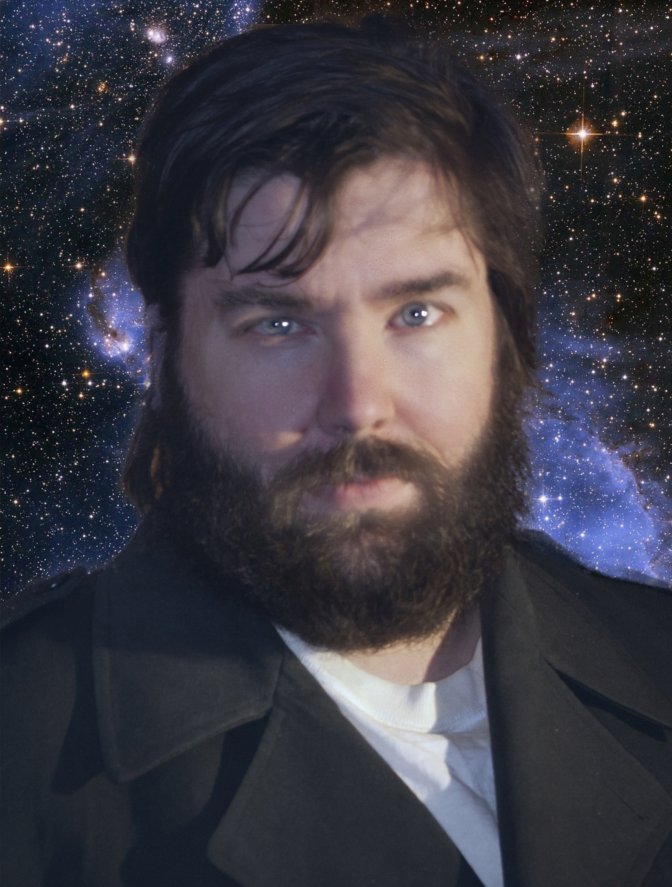Endings & Beginnings
January 2, 2024
Happy New Year!!
We have made it through another wild year, and now we are faced with the blank slate of 2024. Just one day in, and all we can only speculate what great discoveries and advances will be made in the scientific fields this year.
But that is not why I am writing this article today. This is a time when people throughout the world look at making changes to their lives and routines, and I am no different. Some of you may have noticed a decline in the number and the depth of the articles on this page over the last couple of years, and it is time for some explanations. Several actually.
The short answer is that I am (probably) closing down my science blog. I might still write the rare article, but I won't maintain it or continue producing new content on any regular schedule any longer. And there are several reasons for this.
One is simply my changing schedule. When I started this project, I was still an undergraduate student and had nothing more to worry about than classes and exams. I had plenty of spare time to devote to writing these articles. Now I am doing full time work as a freelancer, scientist, and caregiving, often having to manage over one hundred hours per week of tasks before I can even start writing new articles. And I am hoping to increase my work load in 2024 with several new projects that will be announced later.
The second reason is the rise of artificial intelligence and the growth of professional science journalism online. I started this project when the internet was only used by a few academic nerds. Now most news is broadcast online and there are multi-billion dollar companies who hire fulltime science journalists to produce a constant stream of content. I simply cannot compete with them, and never really intended to. Now that AI models such as ChatGPT can write at speeds far faster than even an entire newsroom, that situation will only worsen.
And finally there is simply the changing nature of the internet. Science journalism has moved into a visual medium now, controlled by major providers such as YouTube. The era of written articles and blogs is over, and has been for several years. As some of you already know, I have been providing content for other scientific content creators through both scientific consulting and through the production of rendered video footage, but I have never committed the time and energy to creating my own channel.
And so we get to the new beginnings.
I am going to be launching my own YouTube channel to continue providing information on interesting scientific and mathematical ideas, and perhaps even provide new perspectives on existing theories and models. As this is a very labour intensive process, I expect to only post videos a few times per year, but it will still full my creative needs. But more about that later.
For now I want to thank everyone who has joined me on this journey and enjoyed my articles. I am proud of those of you who were inspired to pursue scientific education and careers of your own as a result. And I hope that a few of you learned a few things along the way.
This is not so much an ending and a transformation into something new, and I look forward to sharing it with all of you when the time comes. Thank you for everything.
May you all have a happy and prosperous 2024!
We have made it through another wild year, and now we are faced with the blank slate of 2024. Just one day in, and all we can only speculate what great discoveries and advances will be made in the scientific fields this year.
But that is not why I am writing this article today. This is a time when people throughout the world look at making changes to their lives and routines, and I am no different. Some of you may have noticed a decline in the number and the depth of the articles on this page over the last couple of years, and it is time for some explanations. Several actually.
The short answer is that I am (probably) closing down my science blog. I might still write the rare article, but I won't maintain it or continue producing new content on any regular schedule any longer. And there are several reasons for this.
One is simply my changing schedule. When I started this project, I was still an undergraduate student and had nothing more to worry about than classes and exams. I had plenty of spare time to devote to writing these articles. Now I am doing full time work as a freelancer, scientist, and caregiving, often having to manage over one hundred hours per week of tasks before I can even start writing new articles. And I am hoping to increase my work load in 2024 with several new projects that will be announced later.
The second reason is the rise of artificial intelligence and the growth of professional science journalism online. I started this project when the internet was only used by a few academic nerds. Now most news is broadcast online and there are multi-billion dollar companies who hire fulltime science journalists to produce a constant stream of content. I simply cannot compete with them, and never really intended to. Now that AI models such as ChatGPT can write at speeds far faster than even an entire newsroom, that situation will only worsen.
And finally there is simply the changing nature of the internet. Science journalism has moved into a visual medium now, controlled by major providers such as YouTube. The era of written articles and blogs is over, and has been for several years. As some of you already know, I have been providing content for other scientific content creators through both scientific consulting and through the production of rendered video footage, but I have never committed the time and energy to creating my own channel.
And so we get to the new beginnings.
I am going to be launching my own YouTube channel to continue providing information on interesting scientific and mathematical ideas, and perhaps even provide new perspectives on existing theories and models. As this is a very labour intensive process, I expect to only post videos a few times per year, but it will still full my creative needs. But more about that later.
For now I want to thank everyone who has joined me on this journey and enjoyed my articles. I am proud of those of you who were inspired to pursue scientific education and careers of your own as a result. And I hope that a few of you learned a few things along the way.
This is not so much an ending and a transformation into something new, and I look forward to sharing it with all of you when the time comes. Thank you for everything.
May you all have a happy and prosperous 2024!
Posted In : Administrative

 I am a theoretical physicist & mathematician, with training in electronics, programming, robotics, and a number of other related fields.
I am a theoretical physicist & mathematician, with training in electronics, programming, robotics, and a number of other related fields.
